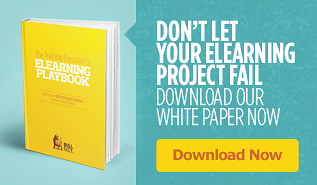Choosing an eLearning vendor partner is a big decision. The way you arrive at that big decision will most likely involve a Request for Proposal (RFP) and may even include a Request for Information (RFI).
What’s the difference between these two tools? And how do you know whether you need to use one or both?
The real purpose of an RFP
First, let’s clarify the real purpose of the RFP. In an RFP, you’ll describe your training need, so that vendors can describe their specific proposed solution, as well as their costs and timelines.
If you have multiple tried-and-true vendors, the RFP allows you to see a few different ways to approach your training problem, while comparing vendors’ costs, timelines, instructional design styles and technologies. You’ll be able to see the underlying assumptions the vendor used to create their solutions.
How is an RFI different?
In contrast, the RFI gives you general information about a vendor and its capabilities, as opposed to soliciting solution ideas specifically for your situation. An RFI, for example, could give you a lot of information you can use to plan and scope your project, like the average cost and timing each vendor requires for a 30- or 60-minute emodule.
Do you need one, or both?
Do you need to start with an RFI, or should you move straight to an RFP? Using an RFI takes longer, so you should only do so if the situation warrants it.
Ask yourself these four questions:
1. Do you already have a list of candidate vendors you’re interested in vetting?
2. If you do have a list of candidate vendors, are you already fully aware of their capabilities?
3. Do you already know with a high degree of confidence how much it should cost and/or how long your learning solution should take to develop?
4. Is your timeline too tight to accommodate an extra two to three weeks for an RFI review?
If you answer “yes” to all of these questions, you should probably jump right to an RFP. If you answered “no” to any one of them, you should consider starting with an RFI.
Download our free eBook,“The Ultimate Roadmap for Selecting the Right eLearning Vendor,” to find more step-by-step guidance, strategies, and checklists for the vendor-selection process.



